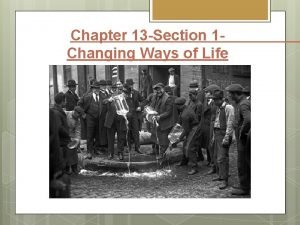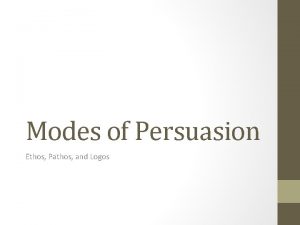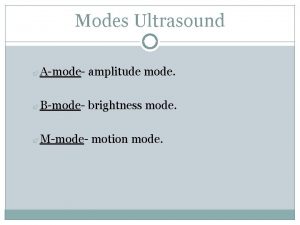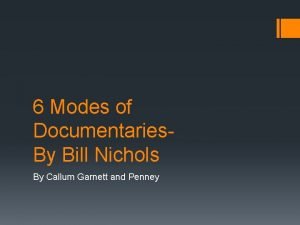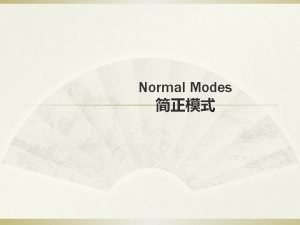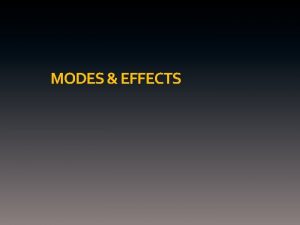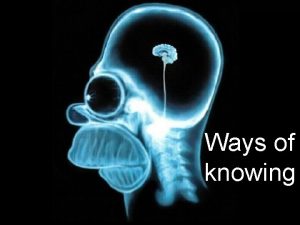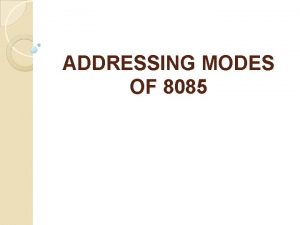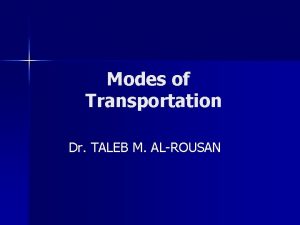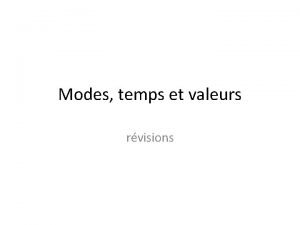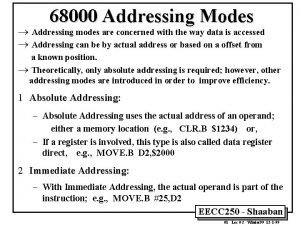Modes of Reading Lecture 1 Ways of Reading













- Slides: 13

Modes of Reading Lecture 1: Ways of Reading Dr Cathia Jenainati

Module website Lecture List n Assessment n Reading List n

Ways of reading what cultural problem is being set up? n why might readers at a particular time and place find this work compelling? n are there differences between my values and the values implicit in the text? n

Ways of reading what kind of cultural intervention is this text making? n how does this text position me as a reader? n what is the text setting up as “normative”? what is being set up against the normative as “different”? n

Ways of Reading New Criticism (1920 s +) “ontological critic” n Wimsatt and Beardsley, “The intentional Fallacy” (1946) n Roland Barthes La nouvelle critique (1964) n Explores the work of interpretation n

Ways of reading Once upon a time there was a village girl, the prettiest you can imagine. Her mother adored her. Her grandmother adored her even more and made a little red hood for her. The hood suited the child so much that everywhere she went she was known by the name…

Little Red Riding Hood n n n n Grandmother, what big arms you have! The better to hug you with, my child. Grandmother, what big legs you have! The better to run with, my child. Grandmother what big teeth, you have! The better to eat you with! Upon saying these words, the wicked wolf threw himself on LRRH and gobbled her up.

Moral From this story one learns that children, Especially young girls, Pretty, well-bred, and genteel, Are wrong to listen to just anyone, And it’s not at all strange, If a wolf ends up eating them. I say a wolf, but not all wolves Are exactly the same.

Moral Some are perfectly charming, Not loud, brutal or angry, But tame, pleasant, and gentle, Following young ladies Right into their homes, into their chambers, But watch out if you haven’t learned that tame wolves Are the most dangerous of all.

Rewriting—Rereading—revising n n n Brothers Grimm, 1857, “Rotkappchen” De Saussure: language and speech James Thurber, 1940, “The little girl and the wolf” Freud: “manifest meanings and latent content” Lacan: “The unconscious is structured like a language”



Key terms New Criticism (Cuddon 544) n Intentional Fallacy (Cuddon 421) n De Saussure (Lodge 2) n Freud, (Lodge 3) n Lacan (Lodge 10) n
 Romans 3:10
Romans 3:10 01:640:244 lecture notes - lecture 15: plat, idah, farad
01:640:244 lecture notes - lecture 15: plat, idah, farad Pre reading while reading and post reading activities
Pre reading while reading and post reading activities Chapter 13 section 1 guided reading changing ways of life
Chapter 13 section 1 guided reading changing ways of life Ways to encourage reading at home
Ways to encourage reading at home 2017 pearson education inc
2017 pearson education inc New market entry strategy
New market entry strategy Emotional events
Emotional events Modes of life
Modes of life Which one is programmable communication interface
Which one is programmable communication interface A mode ultrasound uses
A mode ultrasound uses Timer 8051
Timer 8051 Slidetodoc. com
Slidetodoc. com Bill nichols modes of documentary
Bill nichols modes of documentary



